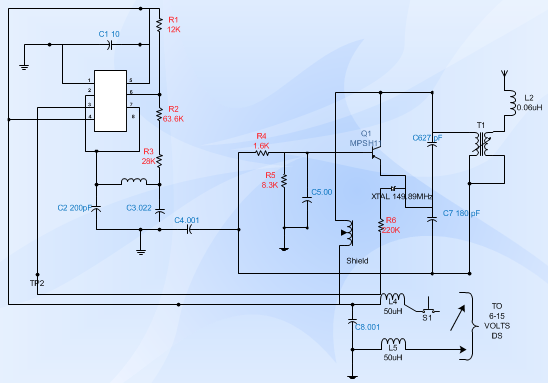

Its beginnings were in capital/profit-led business, but the methodology is applicable to any organised activity. More details are in the glossary below.īusiness Process Modelling is a method for improving organisational efficiency and quality. 'Business Process Management' is an example of a different and related meaning. Of other organisations, for example government agencies and departments, charities, mutuals and cooperatives, etc.Ĭonfusingly, the acronym BPM can mean different things, some closely related to Business Process Modelling others less so. Business Process Modelling is not only carried out in conventional businesses the methodology is increasingly applicable to all sorts Wohed, P., van der Aalst, W.M.P., Dumas, M., ter Hofstede, A.H.M., Russell, N.Business Process Modelling (BPM) is a modern term and methodology which has evolved through different stages and names, beginning during the 'division of labour' of the late 1700s, when manufacturing first moved into factories from cottage industry.īroadly the term 'business' in Business Process Model/Modelling/modelling is interchangeable with 'organisation'. White, S.: Using BPMN to model a BPEL process. In: Proceedings of the International Working Conference on Information and Process Integration in Enterprises (IPIC 1996), Cambridge, MA, pp. Van der Aalst, W.M.P.: Three good reasons for using a Petri-net-based workflow management system. Van der Aalst, W.M.P., van Hee, K.M.: Workflow Management: Models, Methods, and Systems. In: van der Aalst, W.M.P., ter Hofstede, A.H.M., Weske, M. Van der Aalst, W.M.P., ter Hofstede, A.H.M., Weske, M.: Business Process Management: A Survey. Van der Aalst, W.M.P., ter Hofstede, A.H.M.: YAWL: yet another workflow language. Technical report FIT-TR-2003-07, Queensland University of Technology, Brisbane, Australia (2003) Van der Aalst, W.M.P., Alred, L., Dumas, M., ter Hofstede, A.H.M.: Design and implementation of the YAWL system. Technical report FIT-TR-2003-06, Queensland University of Technology, Brisbane, Australia (2003)

Van der Aalst, W.M.P.: Patterns and XPDL: A critical evaluation of the XML process definition language. Van der Aalst, W.M.P.: Using process mining to bridge the gap between BI and BPM. Peterson, J.L.: Petri Net Theory and the Modeling of Systems.
Business process modelling basics software#
Ouyang, C., van der Aalst, W.M.P., Dumas, M., ter Hofstede, A.H.M.: From business process models to process-oriented software systems: The BPMN to BPEL way (October 2006) Holt, A.: Coordination Technology and Petri Nets.
Business process modelling basics series#
The Morgan Kaufmann series in data management systems. Han, J., Kamber, M.: Data mining: concepts and techniques. Organization for the Advancement of Structured Information Standards (OASIS). In: Proceedings of the Conference on Simulation, Measurement and Modeling of Computer Systems, vol. 8(3), pp. 1–12 (2011)Įllis, C.A.: Information control nets: A mathematical model of office information flow. In: Proceedings of the 30th ACM SIGMOD-SIGACT-SIGART Symposium on Principles of Database Systems, PODS 2011, pp. IEEE Data Engineering Bulletin 32(3), 3–9 (2009)ĭeutch, D., Milo, T.: A quest for beauty and wealth (or, business processes for database researchers). Document Number WFMC-TC-1011 3.0 (February 1999)Ĭohn, D., Hull, R.: Business artifacts: A data-centric approach to modeling business operations and processes. In: Proceedings of the 33rd International Conference on Very Large Data Bases, VLDB, pp. 78–89 (2011)īeeri, C., Eyal, A., Milo, T., Pilberg, A.: Monitoring business processes with queries. In: 14th International Conference on Database Theory-ICDT 2011, pp. This process is experimental and the keywords may be updated as the learning algorithm improves.Ībiteboul, S., Bourhis, P., Vianu, V.: Comparing workflow specification languages: a matter of views. These keywords were added by machine and not by the authors. We also address the novel, yet growing, topic of Business Process Mining, and point out to open research challenges in the area. Starting from the underlying notion of workflow modeling, this paper introduces the basic concepts of modeling and implementing business processes using current information technologies and standards, such as Business Process Modeling Notation (BPMN) and Business Process Execution Language (BPEL). Nowadays, with increased globalization, BPM techniques are used, for example, to optimize the way in which organizations react to business events, in order to enhance competitiveness. Business Process Modeling (BPM) is the activity of representing the processes of an organization, so that they can be analyzed and improved.


 0 kommentar(er)
0 kommentar(er)
